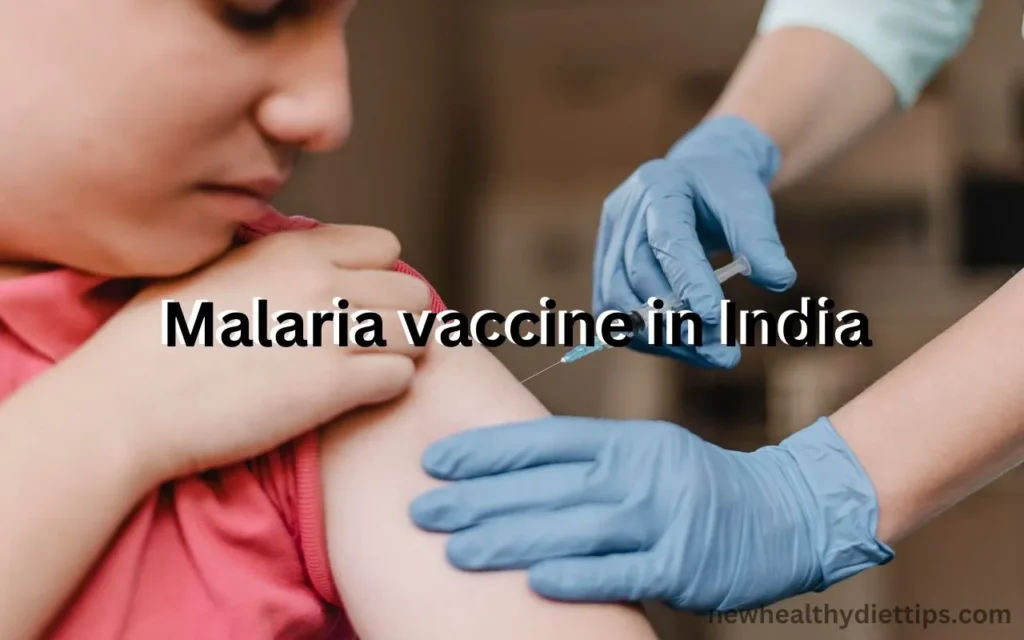You have probably heard of malaria. The sickness kills, right? Over 200 million instances annually. Imagine a vaccine against it. Major change! No joke. A novel malaria vaccine is being tested in India. Early results are promising. It might be big for India, where malaria is annual. Millions sicken and thousands die. Most victims are under-5s. Heartbreaking! But this new vaccine may change things. Kids could be immune after a few doses. Stop missing school and childhood due to malaria. Malaria vaccine in India could save many Indian and international lives. Will it operate as planned? Let’s explore the future!
Short Note of Malaria Vaccine in India
India, where malaria is a substantial public health issue, has long anticipated a vaccine. From 2000 to 2023, malaria cases dropped by nearly 80% in India, but over 63,000 people died from it in 2023.
A promising new tool
World Health Organization authorized the first malaria vaccine, RTS, S, in 2021. Over four years, RTS, S avoided 4 in 10 malaria cases in clinical trials. RTS, S is the first vaccine to protect young infants from malaria partially. RTS, S alone cannot eliminate malaria but could save tens of thousands of lives annually.
Challenges Remain
Despite this promising breakthrough, distributing this malaria vaccine in India to those who need it isn’t easy. RTS, S costs $5 for each dose and requires 4 doses to work. Protection fades after 4-5 years. RTS and S must be used with bed nets, spraying, and treatment.
Game-Changing If Implemented
If India can scale up malaria vaccination, it might transform the game. Vaccinating India’s most at-risk youngsters will require a massive health system and vaccine delivery investments. However, by combining RTS and S with existing management techniques, India can progress against its deadliest illness. Malaria removal is difficult, but emerging techniques like RTS and S offer promise that India could be malaria-free in our lifetimes.
The new malaria vaccine in India gives hope to the fight against this devastating illness, which kills thousands of Indians each year, especially youngsters. RTS S could save countless lives if used nationwide in India as part of a malaria control strategy. Although many obstacles remain, RTS S is a promising new technology that could help India eliminate malaria.
R21/Matrix-M: When Will the Second Vaccine for Malaria Be Available?

Researchers are striving to improve malaria vaccinations. R21/Matrix-M is the most promising candidate. R21/Matrix-M, developed by Oxford University, completed a Phase 2b experiment in young African children. The vaccination prevented malaria up to 77% over a year, which was promising.
When might R21/Matrix-M be certified and widely used? Unfortunately, it takes years.
To establish safety and efficacy in more people and places, researchers require an extensive Phase 3 trial. If all goes well, the vaccine might be licensed in 2023. Global production and distribution will take longer.
The WHO wants to develop an approved malaria vaccine 75% effective against severe malaria for four years by 2025. R21/Matrix-M may achieve this goal, but assurances must be made. Researchers must monitor how long the vaccination lasts and whether new malaria parasite strains evolve that the immunization does not protect against.
A successful malaria vaccine in India would change everything, especially in Sub-Saharan Africa, where most malaria deaths occur. WHO estimates 229 million malaria infections and 409,000 deaths in 2019. Children under 5 account for 67% of malaria deaths worldwide.
R21/Matrix-M suggests a highly effective vaccine may soon defeat this fatal disease. The last several years have shown what can be accomplished when researchers, funders, and communities work together to solve one of humanity’s biggest health problems. We eagerly anticipate the results, but ongoing funding and political courage are needed to bring new lifesaving tools to those who need them.
Vaccine Meant for Plasmodium Falciparum, Expected to Be Affordable
While malaria control has improved in India over the past decade, it remains endemic in broad sections. A new malaria vaccine in India could lower cases further. The Oxford University-developed R21/Matrix-M vaccine targets Plasmodium falciparum, the deadliest malaria parasite and India’s most common cause of malaria.
Affordable and Reachable
The R21/Matrix-M malaria vaccine in India promises to be cheaper and more accessible than other malaria vaccines under development. To aid malaria-endemic countries like India, researchers are developing a low-cost vaccine. The vaccine is easier to adopt than others because it only needs four doses to be effective.
Highly Effective
Late-stage R21/Matrix-M vaccine trials demonstrated up to 77% malaria prevention over 12 months. This is better than Mosquirix, the only available malaria vaccine, which is 36% effective. If authorized, the R21/Matrix-M vaccine’s great efficacy, affordability, and simple dose regimen could revolutionize malaria management and public health in India.
How Much Will the Malaria Vaccine in India Cost?
Malaria vaccine distribution in India will depend on cost. As with many new vaccinations, malaria vaccine production and distribution will be expensive. Although production scales dramatically, expenses should decrease significantly.
Production Costs
Malaria vaccines cost $5–$10 per dosage. Vaccinating India’s 300 million at-risk people would cost billions at this price. If production is increased to hundreds of millions of doses yearly, costs could drop below $2 per dosage. A countrywide immunization effort is more viable at this lower cost.
The Distribution and Delivery
Distributing and delivering vaccines across India increases costs. Health clinics need resources to transport, store, and administer vaccines. Malaria vaccines need proper refrigeration. The Indian government must invest in refrigeration equipment and staff training to keep vaccines viable throughout transit and storage.
Aid from the government
To make malaria vaccines inexpensive and available to at-risk communities, the Indian government may need to subsidize most initial costs. The government may pay 50-75% of vaccine production and distribution costs to give residents a cheap or free vaccine. As costs fall, government subsidies can be cut.
Long-term savings
The initial malaria vaccine investment may appear excessive, but the long-term public health and healthcare cost savings may outweigh it. An effective malaria immunization campaign could reduce malaria cases, hospitalizations, and deaths in India. Millions could cut malaria-related healthcare expenditures. If costs can be kept low and sustainable, the malaria vaccine could revolutionize malaria control in India.
Conclusion of Malaria vaccine in India
That’s it. India still struggles with malaria, but this new malaria vaccine could change everything. Imagine a world with fewer malaria cases and deaths thanks to this vaccination. The quality of life for millions would improve. The vaccine needs additional testing and development before release. It has great promise. Wait and see how vaccination studies go. This could be one of India’s greatest public health triumphs. Malaria vaccine in India intriguing discovery should be watched closely in the future. As additional data arrives, cautious optimism may be preferable. But eradicating malaria in India appears possible.
Our Services include the best healthy eating habits, nutrition guides, diet, nutrition plans and newsdailytime.
FAQs
How effective is the vaccine?
The RTS, S vaccine prevents up to 4 out of 10 malaria cases, including 3 out of 10 life-threatening severe malaria cases. Despite its flaws, it can save lives and minimize disease. The WHO recommends large-scale RTS S vaccination pilots learn how to provide it.
Who gets the vaccine?
The RTS S vaccine is authorized for children in sub-Saharan Africa and other moderate-to-high malaria transmission zones. The initial three-dose immunization series is given to children 5-17 months old, followed by a booster 15-18 months later. The vaccination may be approved for 6-week-olds.
What are the side effects?
RTS and S vaccination’s most common side effects include mild injection site soreness, fever, lethargy, and headaches. Convulsions and meningitis are rare but dangerous side effects. All immunizations can cause uncommon allergic responses. Comprehensive safety monitoring during clinical trials and pilot programs indicated no long-term adverse effects of Malaria vaccine in India.
Read More: Canada Medical Test

